External Paging, Loud Bell & Strobe Tech Bulletin from sandman.com
This is all easy stuff! If you understand a little about electricity and can wire up a switch, light bulb, and battery to make the bulb light, you can do this stuff.
Sometimes you may need to do a little soldering. If you haven't soldered before practice at the office or home before messing with the customer's equipment at their site.
If you have never done anything like this, don't worry. It's easy. Just be sure to set it up at the office or at home and get it working there. Practice on whatever kind of phone system you have in the office. Just don't do it for the first time at the customer's site!
Doing this stuff for the first time in the heat of battle with the customer breathing down your neck will put a lot of stress on you. Messing with it at home and writing down notes and drawings will make it a piece of cake when you get the customer's site, and you'll be a hero!
When you're connecting this stuff together take it one small piece at a time and verify each component and that the next component works. Hooking everything up and finding that it doesn't work will just mean you have to break it down to the most basic components and test each part separately anyway. Might as well save yourself some time!
This Bulletin Can Help with the Following Scenarios:
You need a loud bell or strobe for an electronic / VoIP phone where the electronic phone is, or somewhere else in the office.
You need to hear a phone ring or a voice intercom call outside an office on the shop floor.
You need to hear the CO lines (ring groups) ring over the paging system in the plant.
You need to hear paging in the plant or office, but the system has no external page / page zones, or the system won't page enough speakers in phones for an all call page.
You need to hear music over the paging speakers all the time, except when a voice page goes out.
You need to be able to override the regular paging system in an emergency.
You need to play a sound through the paging system for an emergency, start and stop time, lunch, or break time.
You need a loud bell or strobe for an electronic / VoIP phone where the electronic phone is, or somewhere else in the office.
This is really easy! Program call coverage from a new analog station port to the extension you need to ring (an ATA on a VoIP system). When the electronic phone rings, the analog station will ring. Put the jack for the analog station where you need to hear the loud bell or see the strobe light.
You can put something like our Varitone ringer, or a Loud ringer or Strobe made for regular analog phone lines on the analog station:
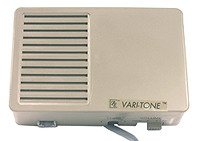
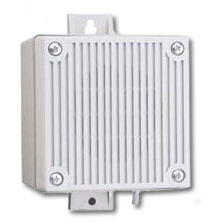
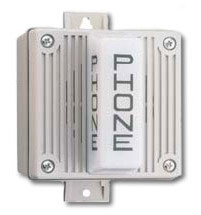
(requires 110VAC at ringer)
All of the above electronic ringers and the strobe are appropriate for the crummy ringing from most analog station ports on phone systems or ATAs. Real bells may not ring on an analog station port on some phone systems.
Note that the Loud Ringer with Strobe (above) requires 110VAC piped into the box, or an AC power cord attached to it (not included). It won't ring or strobe without the AC.
Some analog station ports, or ATA devices won't put out enough Ring Voltage to activate external ringers and paging systems. Have a look at our Ring Voltage Tech Bulletin for more details on Ring Voltage and suggested fixes.
What if you don't have a single spare analog station ports on the system, and there is no ATA available for that system?
Use an Audio Controlled Relay with a 24VDC Power Cube:
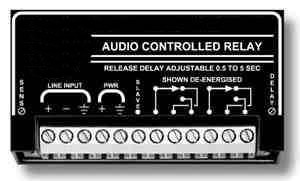
You can use the phone that's ringing itself to do this at the user's desk, or put a spare (used, junky or cheapest model) phone in the phone room and do this mod (wrap some tape around the handset and phone so it can't be taken off-hook accidentally) ...
Whenever the Audio Controlled Relay hears audio, ringing, paging or voice intercom, the relay contacts will close, and the ringer or strobe will go off. You may not want your ringer or strobe to go off on a voice page or voice intercom call, so you may have to disable that capability on that extension in programming?
You'll have to use a ringer or strobe that will work on 12VDC or 24VDC (depending on what you can get to do the job). A regular analog station port sends out
Open the phone and solder a cable with at least two wires to the speaker inside the phone, then bring the cable out through a vent hole in the phone.
Connect the two wires that you soldered to the speaker to Line Input + and - on the Audio Controlled Relay.
Connect the two wires from the 24VDC Power Cube (uses 50ma) to the PWR + and Ground (+ goes to +).
Put your toner in continuity test mode (short the clips and the LED should light) and put the clips on wires you put under the screws of a Normally Open (De-Energized) relay contact (the first and third screws from the right). When the relay hears audio, those contacts will short and light the LED in your toner.
Adjust the Sensitivity and Delay pots so the LED comes on when the volume for the ringer and intercom speaker is at the normal level on the phone.
Once you see the toner LED light when the relay hears audio, you use those same leads to turn on whatever you need to. Both the Loud Ringer and Loud Ringer with Strobe (above) are activated by both ring voltage and 24VDC (you need a 24VDC Power Cube to use 24VDC).
Note that a telephone line powered strobe is probably not going to work on an analog station port on a phone system because of the crummy ring voltage most provide. Even used on a real CO line with good ring voltage a line powered strobe is not going to be very bright.
This is how you activate a light or buzzer with a relay:
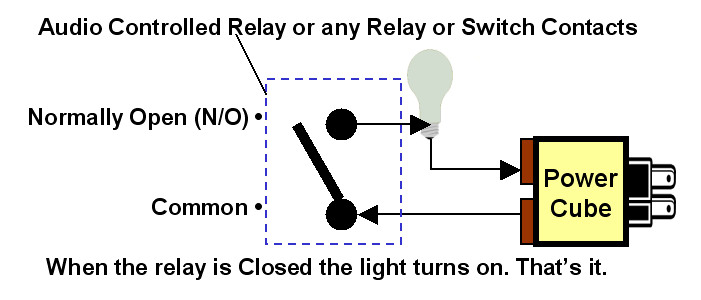
Note that doing this to a phone on the customer's desk isn't the best choice since if the customer turns the volume down or hits MUTE / DND on their phone, the Audio Controlled Relay probably won't trigger anymore - and you'll have a service call.
It's always MUCH safer to do it on a phone in the phone room, with the ringer and voice intercom set to the default levels so it will always trigger the Audio Controlled Relay, and the handset taped to the phone (really well) so it can't go off-hook to prevent the speaker from working.
If you want to detect when an electronic phone rings and activate something you can setup call coverage to an ATA or analog station port and use our Modular Ring Relay to activate just about anything. You may need a Slave Relay for higher voltage / 110VAC!
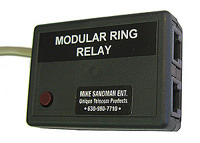
If you need to detect when an analog station is off-hook, use our Modular Series In-Use Relay:
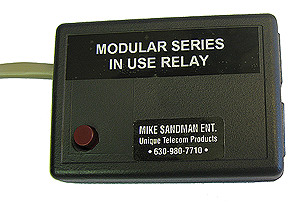
If you need to detect when an electronic phone is off-hook on the headset or handset, you can use our Headset In-Use Relay:
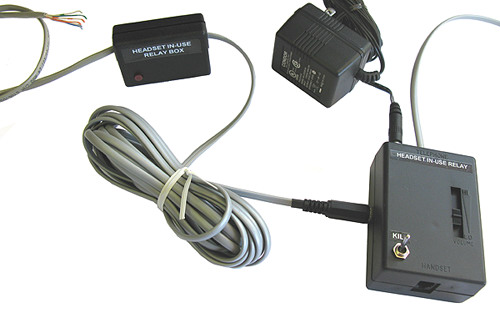
Some phone systems don't have an external page port, provide for external zone paging, or have a provision for a loud bell or strobe. Especially on hosted VoIP systems where there is no KSU on the premise.
Some of the newer VoIP phone systems will only page a limited number of stations through the speaker in the phone. While there may have been "all call" on the old system paging 40 phones, the new system's "all call" may be limited to 16 or 32 stations.
But the customer had it on their old system and needs it to conduct day to day business.
Those are some of the things where salesmen get caught. Not checking to see how paging, loud ringing or other special devices are used on the existing phone system when giving a quote for a new system.
The new system gets installed and seriously screws up the customer's business when they can't page with the new system, and/or there are no loud bells or strobe lights. A bad day when the customer tells you to take the system out and put the old one back in.
Luckily, the fix for all these problems is pretty easy. Even pretty cheap. All it takes is a basic knowledge of electricity. If you can take a battery and light bulb and make it go on and off with a switch, you can probably do this stuff just fine.

 Products
Products